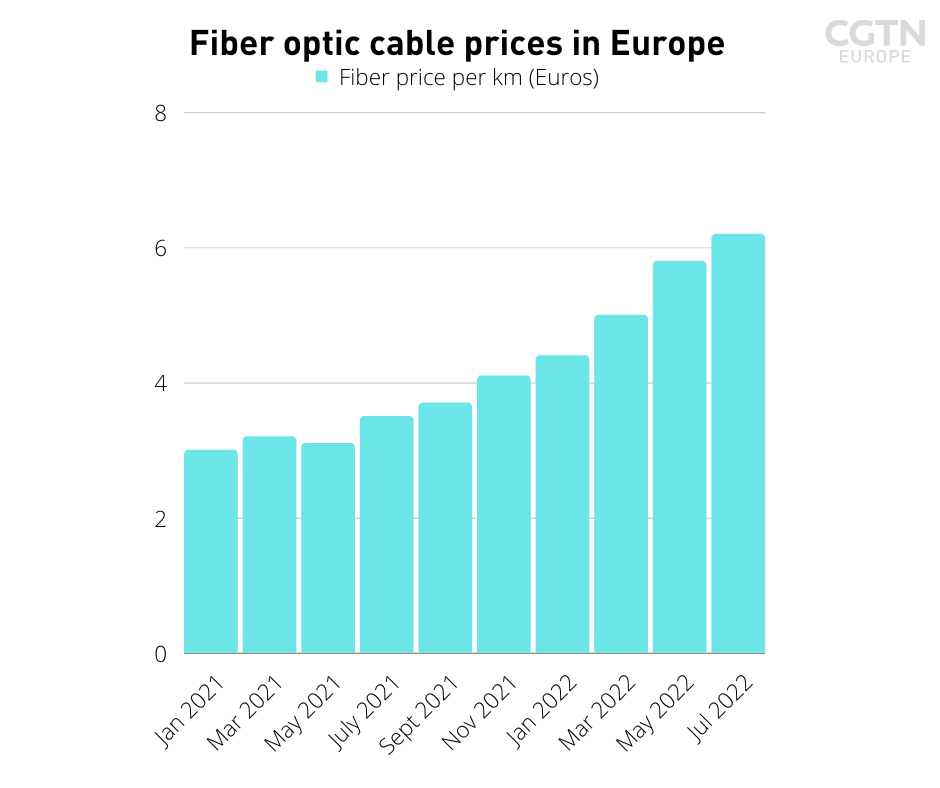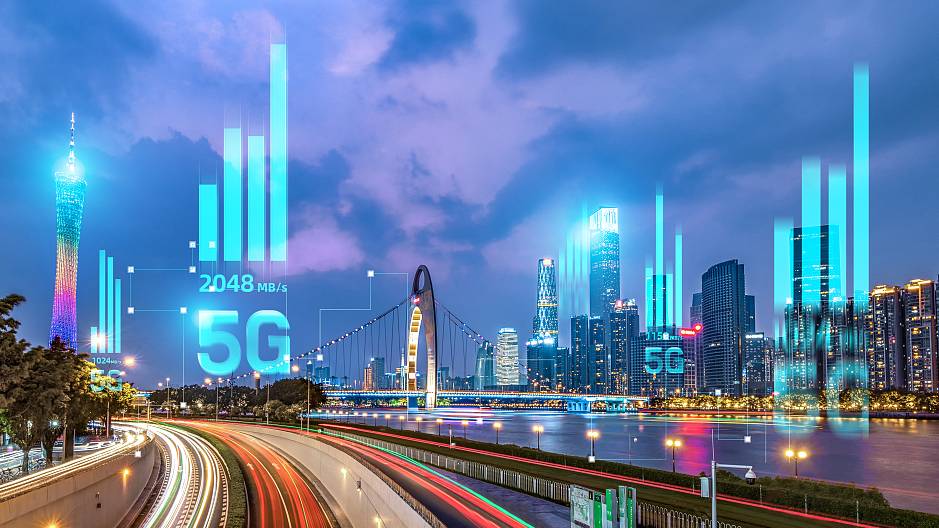
Consumers are facing a struggle to stay connected around the world. /David Gannon/AFP
Consumers are facing a struggle to stay connected around the world. /David Gannon/AFP
European businesses, governments and individual consumers wanting faster and more reliable internet speeds are in for a bumpy ride thanks to a global shortage of fiber-optic cable.
Prices have rocketed in Europe thanks to a scarcity of key components such as helium – compounded by rising delivery costs and a sticky labor market – at a time when broadband demand continues to surge, especially during the pandemic.
Prices have more than doubled from record lows in January 2021 in Europe, according to market research firm Cru Group, and this has huge consequences for everyone.
"The biggest impact for consumers is the stretching out of lead times," says Michael Finch, principal analyst at Cru. "Current lead times for optical cable used in our broadband or Fiber to the Home (FTTH) networks can now stretch to one year in many regions. It's becoming harder and harder to source cable now."
Hampering public access
Finch warns that this will impact delivery times not just for broadband providers, but also for authorities pledging to improve public digital access.
"This increased lead time, and network construction projects becoming increasingly delayed, means governmental and private targets for the number of homes passed with FTTH will slip," he says.
"This isn't great given the better levels of connectivity promised to the country. The overall inflationary environment and rising costs for things like energy, construction and oil is also a problem.
"The bigger impact to governments comes with the total cost of deploying the optical cable in the ground. This has nearly doubled in many key telecom nations. It is this which could more meaningfully act to constrain demand over the coming 12-18 months."

Price of optic fiber has more than doubled in Europe since January 2021
Price of optic fiber has more than doubled in Europe since January 2021
Governments have set themselves ambitious plans for rolling out 5G, with the European Commission setting a target to cover all populated areas by 2030. Multinational companies such as Meta, Google and Amazon are also desperate to keep up with digital demand on their platforms. All of this needs optic cable laid under the ocean or ground.
Finch describes the many "headwinds" that are hampering these objectives.
"The most important or prevalent issue is raw material scarcity or supply constraints which are pushing up prices," he says. "Helium prices have more than doubled in the last two years due to large outages at plants in the U.S. and Russia. Prices for Silicon Tetrachloride are also up 40 per cent. Both of these are integral to the production of bare optical fiber.
"The lack of skilled labor is also a big problem. This is having a big impact on slowing down cable deployments in the U.S. and France right now."
Faster internet speeds have been strongly linked with economic growth and over the last 20 years with a big disparity in delivery rates around the world, there has been growing concern over a 'digital divide.'
Online connectivity is "integral" for economies to grow, says Finch.
"If we look at the U.S. for example, there are many communities without fast enough internet to run even the most basic of applications in today's post-COVID-19 world. It is so important to connect these regions."

Digital connectivity is crucial for helping economies to grow, says Michael Finch of Cru. /CFP
Digital connectivity is crucial for helping economies to grow, says Michael Finch of Cru. /CFP
Cru Group estimates that total cable consumption increased by 8.1 percent in the first half of the year compared to the same time last year. China accounted for 46 percent of this total. North America is the fastest-growing region, at 15 percent year-on-year.
Is it all doom and gloom for digital consumers and providers?
"When raw material supply gets back on track, this should see pressures ease on the optical fibre and fiber-optic cable markets," Finch says.
"I think the shortages in helium will soon resolve itself, other inflationary pressure my begin to normalize in the next 12 months and lead times will improve as more capacity comes online.
"But while there is enough global capacity currently, regional bottlenecks will have to be addressed in the mid-term. It is the labor challenges which I see as the hardest to overcome and I would put most effort into resolving this."

